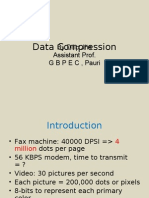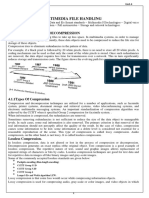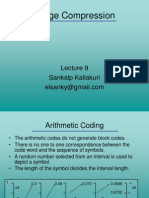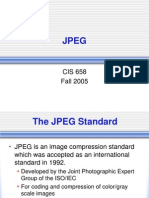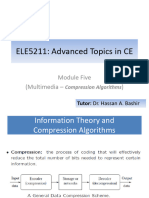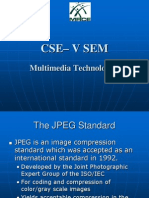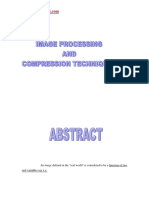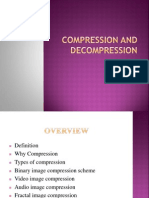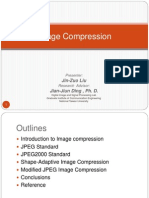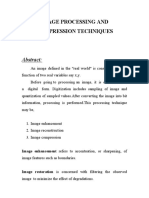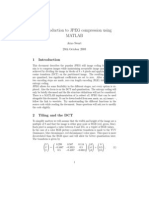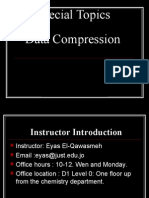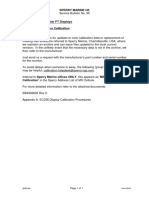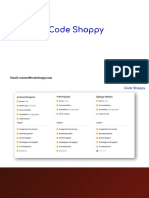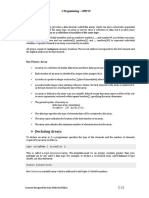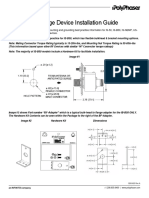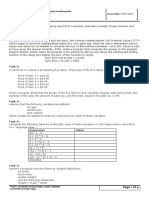0% found this document useful (0 votes)
11 views28 pagesUnit 3-Lecture 3
The document outlines a lecture on Multimedia Systems focusing on bi-level image acquisition and representation, specifically discussing bi-level image compression standards like CCITT Group III and IV. It explains the importance of bi-level images in applications such as fax transmission and barcodes, detailing compression techniques like Run-Length Encoding (RLE) and Huffman coding. The document also highlights the advantages and applications of bi-level image compression, emphasizing its efficiency in reducing storage and transmission space.
Uploaded by
theyashmahato69Copyright
© © All Rights Reserved
We take content rights seriously. If you suspect this is your content, claim it here.
Available Formats
Download as PPTX, PDF, TXT or read online on Scribd
0% found this document useful (0 votes)
11 views28 pagesUnit 3-Lecture 3
The document outlines a lecture on Multimedia Systems focusing on bi-level image acquisition and representation, specifically discussing bi-level image compression standards like CCITT Group III and IV. It explains the importance of bi-level images in applications such as fax transmission and barcodes, detailing compression techniques like Run-Length Encoding (RLE) and Huffman coding. The document also highlights the advantages and applications of bi-level image compression, emphasizing its efficiency in reducing storage and transmission space.
Uploaded by
theyashmahato69Copyright
© © All Rights Reserved
We take content rights seriously. If you suspect this is your content, claim it here.
Available Formats
Download as PPTX, PDF, TXT or read online on Scribd
/ 28




